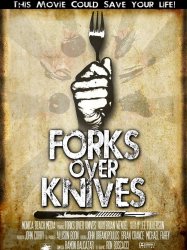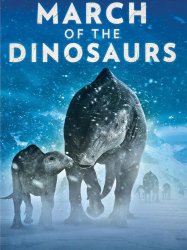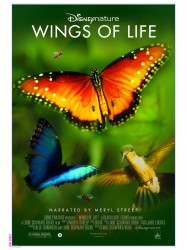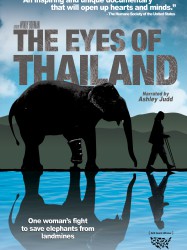Gates of Heaven is a american film of genre Documentary directed by Errol Morris released in USA on 1 october 1978
Gates of Heaven (1978)

If you like this film, let us know!
- Infos
- Casting
- Technical infos
- Photos
- Videos
- Film quotes
- Characters
- Music
- Awards
Released in USA 1 october 1978
Length 1h25
Directed by Errol Morris
OriginUSA
Genres Documentary
Themes Films about animals
Rating72%










Gates of Heaven is a 1978 documentary film by Errol Morris about the pet cemetery business. It was made when Morris was unknown and did much to launch his career.
Synopsis
The film, like Morris' other works, is unnarrated and the stories are told purely through interviews. It is divided into two main sections. The first concerns Floyd "Mac" McClure and his lifelong quest to allow pets to have a graceful burial. McClure's business associates and his competitor, a manager of a rendering plant, are interviewed. Eventually the business fails and the 450 animals have to be dug up and transported to the Bubbling Well Pet Memorial Park. This operation is run by John "Cal" Harberts and his two sons. This business is far more successful, and continues to operate today, run by Cal's son Dan Harberts.Comments
Leave comment :
Suggestions of similar film to Gates of Heaven
There are 13 films with the same director, 8975 with the same cinematographic genres, 3515 films with the same themes, to have finally 70 suggestions of similar films.If you liked Gates of Heaven, you will probably like those similar films :

Vernon, Florida (1981)
, 55minutesDirected by Errol Morris
Origin USA
Genres Documentary
Actors George Harris
Rating69%





Ce documentaire suit plusieurs habitants excentriques de la ville de Vernon en Floride.

Forks Over Knives (2011)
, 1h36Origin USA
Genres Documentary
Themes Films about animals, Cooking films, Environmental films, Documentaire sur la cuisine, Documentary films about animal rights, Documentary films about law, Documentary films about environmental issues, Documentaire sur la malbouffe, Documentary films about health care, Political films, Documentary films about nature
Rating76%





À travers un examen des carrières du médecin américain Caldwell Esselstyn et du professeur de biochimie nutritionnelle T. Colin Campbell , Forks over Knives suggère que « l'évolution de beaucoup, sinon toutes, les maladies dégénératives qui nous affligent peut être contrôlée, voire inversée, en rejetant notre alimentation actuelle basée sur les aliments transformés et d'origine animale. » Il fournit aussi une vue d'ensemble du projet China-Cornell-Oxford, long de 20 ans, qui mena aux trouvailles du professeur Campbell, esquissé dans son livre, The China Study (2005). Il y suggère que maladie cardiaque, diabète, obésité, et cancer peuvent être liés au régime alimentaire occidental d'aliments transformés et d'origine animale (y compris les produits laitiers).

The Last Lions (2011)
, 1h28Origin USA
Genres Documentary
Themes Films about animals, Films about lions, Documentary films about nature
Actors Jeremy Irons
Rating81%





Il y a 50 ans, il y avait près de 500 000 lions en Afrique. Aujourd'hui, ils ne sont plus que 20 000. Pour ne rien arranger, les lions, contrairement aux éléphants, qui sont plus nombreux, ne bénéficient pas de réelle protection que ce soit par mandat gouvernemental ou par décret international . Ce constat c'est l'occasion pour Dereck et Beverly Joubert de lancer un cri du cœur.

March of the Dinosaurs (2011)
, 1h25Origin United-kingdom
Genres Drama, Documentary, Animation
Themes Films about animals, Dinosaur films, La préhistoire, Documentary films about nature
Actors Stephen Fry
Rating64%





The film begins on a summer's day in Northern Canada 70 million years ago and herd of Edmontosaurus and a spiky Edmontonia are feeding on the lush vegetation that grows all around them. Scar, a young male Edmontosaurus, enjoys his life in the Arctic forests with his extended family, comes across a young immature male Troodon named Patch, who has been feasting on baby Edmontosaurus all summer, but now has to chase smaller, more difficult prey as the baby Edmontosaurus are too large to hunt. He chases after an Alphadon, but another clawed foot grabs the fleeing mammal; that of another Troodon, and Patch is becoming impatient. The plentiful food for Scar is ending as well, as the dark, cold Arctic winter is approaching. When night falls for the first time, Scar has loses sign of the herd and spots a dark shape, which turns out to be a Gorgosaurus, which slices his face as he narrowly dodges the killer blow. Later, a herd of Pachyrhinosaurus arrives and starts to compete for the dwindling food supply, further pressuring the herd's search for food. Scar finds the Edmontonia feasting on insect larvae from a fallen tree branch and tries his luck with mixed success. The sun sets and the Pachyrhinosaur herd moves on somewhere else in search of food. The winter's approach causes the herbivores to start risking their safety and a young female Edmontosaurus gets killed by the Gorgosaurus as she wanders too far from the herd. The next day, the Edmontosaurus and Pachyrhinosaurus herds move south for the winter, while Edmontonia stays behind. She's way too heavy and her armoured body has been storing fat to last her through the lean months. Meanwhile, Patch and the Troodons are feasting on the dead female Edmontosaurus when the Gorgosaurus appears. The tyrannosaur scares the Troodons away, but is wounded in the fight, and Patch is frustrated and must work harder to find prey. Far away, the dinosaur herd is moving on, until Scar sees a dark shadows, which turns out to be a flock of scavenging Quetzalcoatlus, the biggest pterosaurs ever, which feed on the dying herd members that could not keep pace. The blizzard arrives and Scar collapses, but an older male arrives and helps him to keep moving through the blizzard. They continue on walking and don't realize they are heading into a trap; the ground breaks apart, meaning that they walked onto a frozen lake. As the herd struggles to escape the icy water, several get dragged under by mosasaurs known as Prognathodon. Scar has never swum before, but he is pushed in and starts to swim for the shore. In the Arctic, Patch picks up a bone and heads back to his nest, which he has been building in the hopes of attracting a mate. Nearby, The Gorgosaurus finds the Edmontonia outside its lair, but the bite to its leg is badly infected and it goes back into the cave to wait for easier prey to wander close. A thousand miles away, the Edmontosaurus herd moves on through a volcanic ash field. Lying in wait, a pack of Albertosaurus sleeps until the herd is close enough to ambush. The feathered carnivores wake up and start to stalk the herd. Scar runs for his life while one of the predators is hot on his heels. During the attack, an avalanche of water, rock and mud caused by the eruption that follows the attack slides down the bank. Scar climbs up the cliff, but loses his courage, and the Albertosaurus, injured in the eruption, begins to close in. Just as Scar sees the avalanche, he rushes up the cliff while the Albertosaurus is swept to its seeming death. Back in the Arctic, Patch tries to impress the female by dancing only to lose out to a more experienced male and the Edmontonia has found a last leaf. Suddenly, the log it stands on breaks apart and the Edmontonia slides down the snow on her back and crashes into a snowdrift, utterly helpless. Far away from the Troodons, Scar tries to call for his family, but the only calls are the ones that didn't make it; the old male Edmontosaurus he has been traveling with and an injured female Pachyrhinosaurus. The Albertosaurus, having survived the mudslide, rises back to its feet and starting following Scar's trail again. Scar and the old Edmontosaurus walks on, but the older animal, suffering from a brain tumor, becomes more aggressive and nervous towards Scar, eventually even biting him. Scar sees the Albertosaurus first, and flees. The old bull Edmontosaur fights the predator until they both tumble over the cliff, locked in a deadly embrace. In the frozen north, Patch learns how to finally catch Alphadon by listening for them under the snow and comes across the overturned Edmontonia. He and several other Troodons attack the ankylosaur, but the Gorgosaurus, now fully healed of its injury, arrives and pulls the herbivore away from the smaller predators. Struggling, the Edmontonia gets back up and injures the Gorgosaurus with her shoulder spikes. The Gorgosaurus heads back to the cave, fatally wounded with a broken leg. As the sun rises the next morning, Scar is becoming weaker and the Quetzalcoatlus that follows senses it. The young dinosaur hears a rustling noise, which turns to be the injured female Pachyrhinosaurus instead. The pterosaur gives up and the ceratopsian herd arrives to cross the river. As they cross the river, groups of Prognathodon arrive and pull many of them underwater. Scar dives in while the mosasaurs continue their attack on the Pachyrhinosauruses. Scar eventually reaches the far bank and reunites with the Edmontosaurus herd, finally reaching safety. The sun eventually rises again and warmth begins to spread across the Arctic Circle. The Edmontonia is feasting on the budding greens and Patch manages to find a mate, offering scavenged meat from the dead Gorgosaurus. Soon, the Edmontosaurus will travel north again once summer begins to arrive to the north.

Wings of Life (2011)
, 1h17Directed by Louie Schwartzberg
Origin USA
Genres Documentary
Themes Films about animals, Environmental films, Documentaire animalier, Documentary films about environmental issues, Documentary films about nature, Children's films
Actors Meryl Streep, Mélanie Laurent
Rating72%





The film's synopsis states: A beautiful love story in danger. Our future depends on an amazing love story between the flowers and fauna consisting of bees, butterflies, birds, and bats, which allow these species to reproduce. Delicate and graceful, the flowers are not content to be the ultimate symbol of beauty. On the contrary, their vibrant colors and their exotic flavors are so many wonders that attract pollinators and drunk with desire. All these animals are involved in a complex dance of seduction on which one third of our crops, a dance without which we could not survive ... Pollen presents the unsung heroes of the global food chain. Their fantastic worlds are full of stories, drama and beauty. While a fragile and threatened, essential for the balance of the planet, it should now actively protect ...

The Eyes of Thailand (2012)
Origin USA
Genres Documentary
Themes Films about animals, Environmental films, Documentary films about animal rights, Documentary films about law, Political films, Documentary films about nature
Actors Ashley Judd
Rating71%





The Eyes of Thailand tells the true story of Soraida Salwala's 10-year quest to help two elephant landmine survivors, Motala and Baby Mosha, walk again after losing their legs in landmine accidents. Along with Soraida's efforts to care for the injured elephants and ultimately help them to walk again, the film also highlights the dangers posed by landmines.

Speciesism: The Movie (2013)
Origin USA
Genres Documentary
Themes Films about animals, Environmental films, Documentary films about animal rights, Documentary films about law, Political films, Documentary films about nature
Rating78%






Blackfish (2013)
, 1h24Origin USA
Genres Documentary
Themes Films about animals, Environmental films, Seafaring films, Politique, Transport films, Documentary films about animal rights, Documentaire animalier, Documentary films about law, Documentary films about environmental issues, Mise en scène d'un poisson, Political films, Documentary films about nature, Mise en scène d'un cétacé
Actors James Earl Jones, Whoopi Goldberg, Anderson Cooper
Rating80%





The documentary focuses on the captivity of Tilikum, an orca involved in the deaths of three individuals, and the consequences of keeping orcas in captivity. The coverage of Tilikum includes his capture in 1983 off the coast of Iceland, and purported harassment by fellow captive orcas at Sealand of the Pacific, incidents that Cowperthwaite argues contributed to the orca's aggression and includes testimonial from Lori Marino, Director of Science with the Nonhuman Rights Project. Cowperthwaite also focuses on SeaWorld's claims that lifespans of orcas in captivity are comparable to those in the wild, typically 30 years for males and 50 years for females, a claim the film argues is false. Interview subjects also include former SeaWorld trainers, such as John Hargrove, who describe their experiences with Tilikum and other captive whales.

Origin USA
Genres Documentary
Themes Films about animals, Films about films, Films about sharks, Documentary films about business, Documentary films about the film industry, Documentary films about films
Actors Richard Dreyfuss, Percy Rodriguez, Carl Gottlieb, Gregory Nicotero, Robert Rodríguez, Eli Roth
Rating75%






Vegucated (2011)
, 1h16Origin USA
Genres Documentary
Themes Films about animals, Environmental films, Documentary films about animal rights, Documentary films about law, Documentary films about environmental issues, Documentary films about health care, Political films, Documentary films about nature
Rating70%





 Connection
Connection